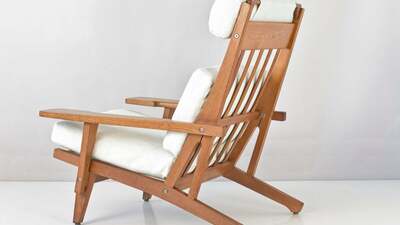Share your craft projects
Make new craft buddies
Ask craft questions
Blog your craft journey
wegner
(Originally posted in October 2022)
In the summer of 2022, I started a project to replace the skirting around the perimeter of my deck using 5/4 p...
I can't really tell if the ends of the stretchers on the original chair had shoulders around the tenons or not. I decided that I would use shoulde...
Now that all of the main chair components are fitted (minus the free-floating backrest), I can begin shaping the pieces to their final form. I sta...
I used a 1/8" radius round-over bit in a palm router to ease the edges of the weaving slots. Nesting the rails together provided a stable platfor...
Before I started weaving the backrest, I made a final check on the cords-per-inch with the actual cord I would be using. It turns out my original...
The secondary stretchers separate the main front and back stretchers and complete the seat frame. The next step in the project is to get those sec...
While the edges of the backrest parts were still square, I cut the mortises for the dominos. Ganging the rails together made a self-supporting str...
This step is out of order compared to the actual sequence of the build, but it seemed to make sense to present it now. The back receives a set of ...
I completed the remaining stretcher mortises in the two pair of front legs and trimmed the outline on the test stretcher.
[20241124-IMG_9577.jpg...
With all the tenons cut on the stretcher blanks, I used a router template to cut them to final shape. I used the test front stretcher as my templa...
While I had been thinking about how to make the arms from the time I had started scheming to build this chair, by the time I got to this point, I s...
With all the major shaping and sanding completed, I had one last task before glue-up, and that was to pre-drill the seat frame for all the L-nails....





















